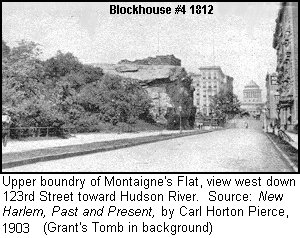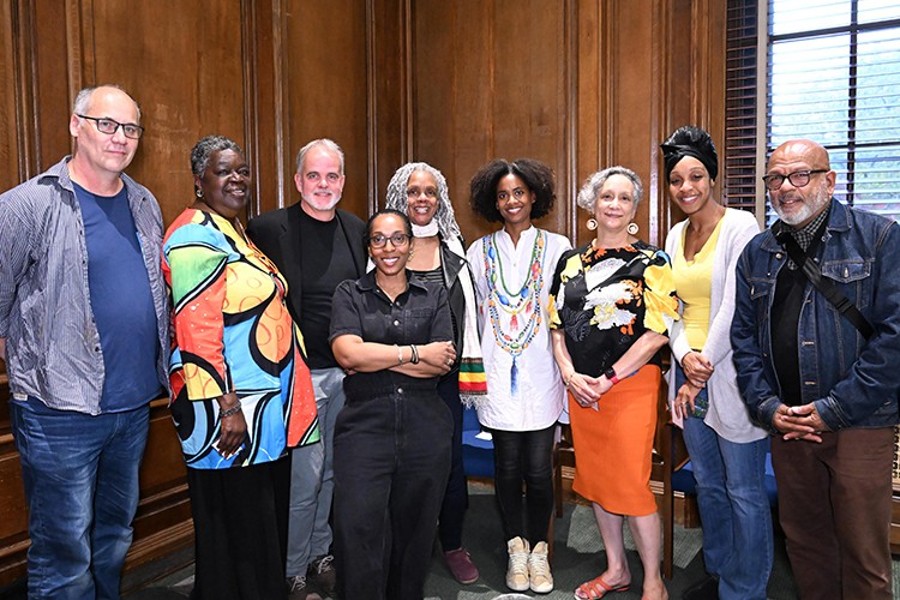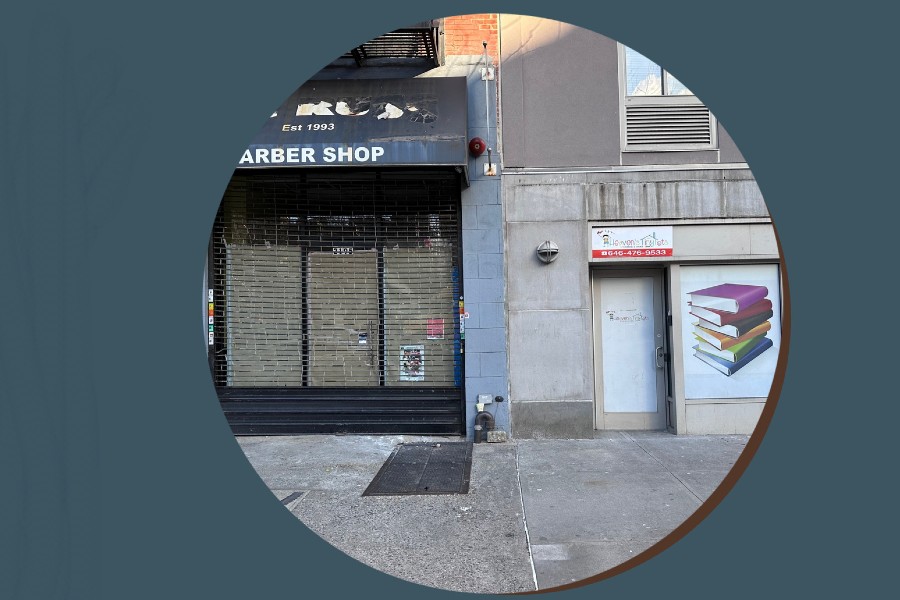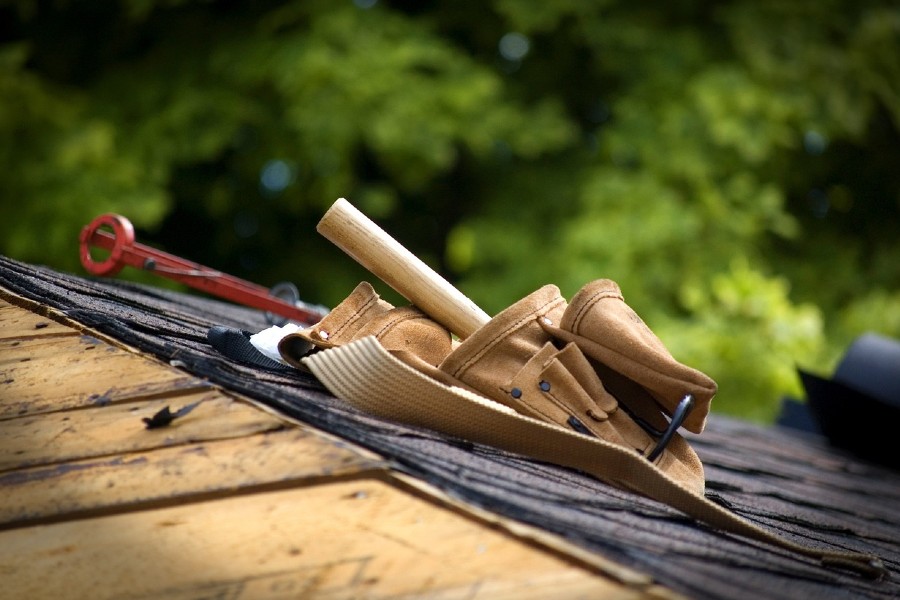 The Blockhouse is a small fort in the northern part of Central Park, in New York City, New York, and is the oldest structure standing in the park. It is located on an overlook of Manhattan schist, with a clear view of the flat surrounding areas north of Central Park. Finished in 1814, the fort was part of a series of fortifications in northern Manhattan, which originally also included three fortifications in Harlem Heights (now known as Morningside Heights). Officially known as Blockhouse #1, the fort is the last remaining fortification from these defenses. Olmsted and Vaux treated Blockhouse No. 1 as a picturesque ruin, romantically overrun with vines and Alpine shrubbery.
The Blockhouse is a small fort in the northern part of Central Park, in New York City, New York, and is the oldest structure standing in the park. It is located on an overlook of Manhattan schist, with a clear view of the flat surrounding areas north of Central Park. Finished in 1814, the fort was part of a series of fortifications in northern Manhattan, which originally also included three fortifications in Harlem Heights (now known as Morningside Heights). Officially known as Blockhouse #1, the fort is the last remaining fortification from these defenses. Olmsted and Vaux treated Blockhouse No. 1 as a picturesque ruin, romantically overrun with vines and Alpine shrubbery.
This structure was likely built on a foundation of a structure dating back to a much earlier date. In 1776 during the Revolutionary War, British and Hessian troops sealed off lower Manhattan from colonial armies by controlling the pass and defending it through a series of fortifications. From trial excavations performed in 1995, it has been determined that the foundations of Blockhouse #1 date back to this time of British occupation of Manhattan.
The current fort was constructed in three phases:
In the first phase, Under the direction of General Joseph Gardner Swift, the fort was hastily constructed by New Yorkers during the War of 1812 in anticipation of a British invasion. The building was assembled by volunteers who brought the building materials with them, hence the red sandstone blocks included with the Manhattan schist.The fort consists of a two-story bunker surrounding a small area, inside which a wooden platform would originally have stood. The wooded platform was sunken with a revolving turret for a cannon. The sides hold small gunports. This structure was likely connected to the ground by a small staircase. Construction on the tower was completed in 1814, two days before the Treaty of Ghent was signed to end the war.
The second phase was during its use as an ammunition and storage building. During this time the top two feet of stone work was added. They are noticeably different in color, composition and stonework.
Later at the turn of the 20th century, the current entrance and staircase were added, as was the tall flagpole in the center of the fort.
Blockhouse #1 stands in the northwest corner of Central Park, in a wooded area that is still rugged, high, and hard to reach. It is located south Of North Dr and north of Huddlestone Br—interior Of Drives in the flagship Park Zone. The building overlooks Harlem Meer and the Loula D. Lasker Pool-Rink.
This structure was initially built as a defensive fort for New York City and soldiers were stationed at the Blockhouse. At its height, nearly 2000 New York state militiamen garrisoned the fortifications. However, the British did not attack New York City, and as such the Blockhouse never saw combat. The Treaty of Ghent was signed on Christmas Eve 1814, and the fort was abandoned almost overnight. It was subsequently used for ammunition storage. In the early 1900s it was used as a place to celebrate patriotic holidays.
The structure is currently unoccupied and unused. A large metal gate covers the door and securely closed access to this location. Occasional tours are provided by the Urban Park Rangers, but independent exploration of the internal fort is not allowed.
The Blockhouse had a bronze tablet commemorating its history placed above the door June 10, 1905. The ceremony was performed by Miss Mary Van Buren Vanderpoel, then president of the Women’s Auxiliary. Receiving the plaque was scheduled to be Park Commissioner Pallas but due to his unexplained absence, it was accepted by General Frederick D. Grant. However the plaque was stolen from this location many years ago and was noticed to be gone on March 28, 1913 at 3 pm. The plaque was documented in a copyrighted picture and was located above the door. The plaque read “This blockhouse was part of a line of fortifications extending from the Hudson to the Harlem River built for the defense of New York by it’s patriotic citizens during the war of 1812-1815. This tablet is erected by the Woman’s Auxiliary to the American Scenic and Historic Preservation Society A.D. 1905”. In 1999, the Blockhouse had a new sign erected at its location describing its history. However, as of 2003, this plaque is also missing.
The Blockhouse is located in a secluded part of the park. It is best to travel there with a group and never alone.
Photo credit: 1) Blockhouse No. 1 in 1905.
Become a Harlem Insider!
By submitting this form, you are consenting to receive marketing emails from: Harlem World Magazine, 2521 1/2 west 42nd street, Los Angeles, CA, 90008, https://www.harlemworldmagazine.com. You can revoke your consent to receive emails at any time by using the SafeUnsubscribe® link, found at the bottom of every email. Emails are serviced by Constant Contact








